Microprocessor. 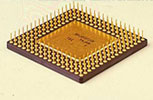 The heart of the computer is Microprocessor. Microprocessor known as the processor or Central Processing Unit (CPU) which performs all the processing (calculations) and controls the other units in the computer system
The heart of the computer is Microprocessor. Microprocessor known as the processor or Central Processing Unit (CPU) which performs all the processing (calculations) and controls the other units in the computer system
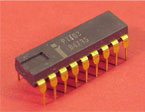 Intel 1103 was the first Dynamic Random Access Memory. It was a 1Kb memory chip. It was very much large. It became the world’s most selling semiconductor device. Intel was recognized as a successful memory chip company.
Intel 1103 was the first Dynamic Random Access Memory. It was a 1Kb memory chip. It was very much large. It became the world’s most selling semiconductor device. Intel was recognized as a successful memory chip company.
In 1971, Intel introduced the Intel 4004:  The 4-bit Intel 4004 provided the basic building blocks - the arithmetic and logic unit that are still found in today's microcomputers. It was very small in size and contained 2,300 transistors. It executed at 108 KHz and was able to execute I 60,000 operations per second. It delivered the computing power same as two ENIAC which was built in 1946 that used 18,000 vacuum tubes and 3000 cubic feet space.
The 4-bit Intel 4004 provided the basic building blocks - the arithmetic and logic unit that are still found in today's microcomputers. It was very small in size and contained 2,300 transistors. It executed at 108 KHz and was able to execute I 60,000 operations per second. It delivered the computing power same as two ENIAC which was built in 1946 that used 18,000 vacuum tubes and 3000 cubic feet space.
In 1972, Intel introduced the Intel 8008 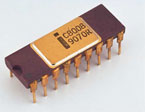 The Intel 8008 microprocessor processed 8 bits of information at a time. It was the first 8-bit microprocessor. By 1981, this Microprocessor family had grown to 8-bit 8088 processors and 16-bit 8086 processor. These two products lead to the production of the first PC by the IBM.
The Intel 8008 microprocessor processed 8 bits of information at a time. It was the first 8-bit microprocessor. By 1981, this Microprocessor family had grown to 8-bit 8088 processors and 16-bit 8086 processor. These two products lead to the production of the first PC by the IBM.
 The 286 Chip offered software compatibility with its predecessors. This chip was first used in PC-AT which was manufactured by IBM. This PC-AT is the system the all modern PCs are based
The 286 Chip offered software compatibility with its predecessors. This chip was first used in PC-AT which was manufactured by IBM. This PC-AT is the system the all modern PCs are based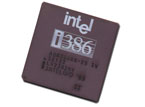 The Intel 386 processor was released with a new 32-bit architecture. The chip could perform more than five million instructions per second (MIPS). Compaq’s DESKPRO 386 was the first PC based on this microprocessor
The Intel 386 processor was released with a new 32-bit architecture. The chip could perform more than five million instructions per second (MIPS). Compaq’s DESKPRO 386 was the first PC based on this microprocessor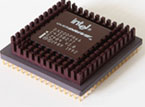 The Intel 486 processors had the first built-in math co-processor. This equaled the performance of some of the mainframe computers.(mainframe computers are explained later in this chapter)
The Intel 486 processors had the first built-in math co-processor. This equaled the performance of some of the mainframe computers.(mainframe computers are explained later in this chapter) The first P5 family (586) processor called the Pentium that executes up to 90 MIPS (Million Instructions per Second). Intel started to name its processor like Pentium.
The first P5 family (586) processor called the Pentium that executes up to 90 MIPS (Million Instructions per Second). Intel started to name its processor like Pentium.
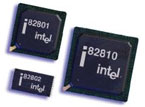 The first P6 family (686) processor called the Pentium Pro was the first to be packaged with a second die containing high-speed L2 memory cache to accelerate performance.(Cache memory is explained in a later chapter)
The first P6 family (686) processor called the Pentium Pro was the first to be packaged with a second die containing high-speed L2 memory cache to accelerate performance.(Cache memory is explained in a later chapter)In 1997, Intel introduced the Pentium II
 Intel revised the Pentium Pro and introduced the Pentium II processor. It had its transistors packed into a cartridge allowing them to attach the L2 cache chips inside the module It was further developed in April 1998 with both the low-cost Celeron processor for basic PCs high-end Pentium II Xeon processor for servers and workstations.
Intel revised the Pentium Pro and introduced the Pentium II processor. It had its transistors packed into a cartridge allowing them to attach the L2 cache chips inside the module It was further developed in April 1998 with both the low-cost Celeron processor for basic PCs high-end Pentium II Xeon processor for servers and workstations.In 1999, Intel introduced the Pentium III 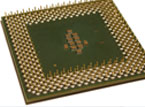 Intel produced Pentium III essentially adding Streaming SIMD Extensions (SSE) with Pentium II. AMD (Advance Micro Devices) introduced AMD K6 processor that could be plugged to same socket and could run the same programs of Pentium. But, AMD introduced the Athlon that required a motherboard with an Athlon supporting chipset and processor socket. AMD started to compete with Intel in high-end desktop PC market in this year
Intel produced Pentium III essentially adding Streaming SIMD Extensions (SSE) with Pentium II. AMD (Advance Micro Devices) introduced AMD K6 processor that could be plugged to same socket and could run the same programs of Pentium. But, AMD introduced the Athlon that required a motherboard with an Athlon supporting chipset and processor socket. AMD started to compete with Intel in high-end desktop PC market in this year
In 2000, AMD and Intel introduced more... 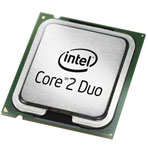 There are number of powerful and efficient processors are being manufactured by the two leading companies Intel and AMD.
There are number of powerful and efficient processors are being manufactured by the two leading companies Intel and AMD.
Some of the new processors:
Intel Core 2 Extreme
Intel Core
AMD Athlon FX
AMD Operon
• In 2000 AMD introduced both its Athlon Thunderbird and Duron processors.
• In 2000 Intel introduced the Pentium 4 which is a 32-bit processor.
• In 2003 AMD released its first 64-bit processor which is Athlon 64
 ශිල්ප 64
ශිල්ප 64